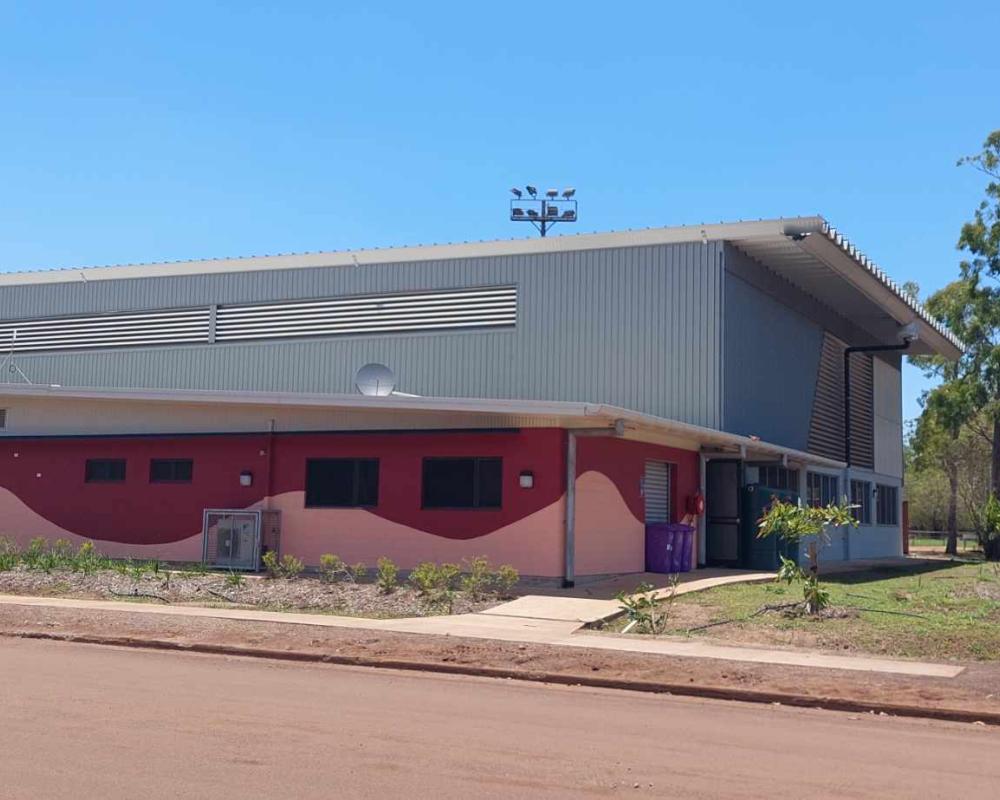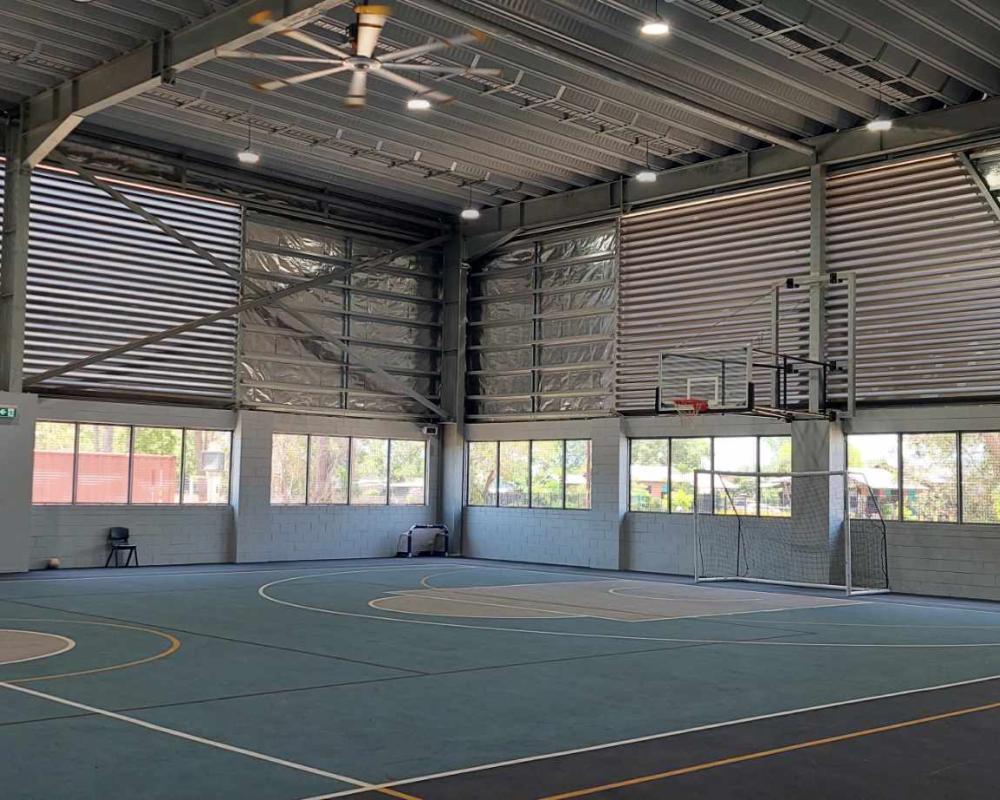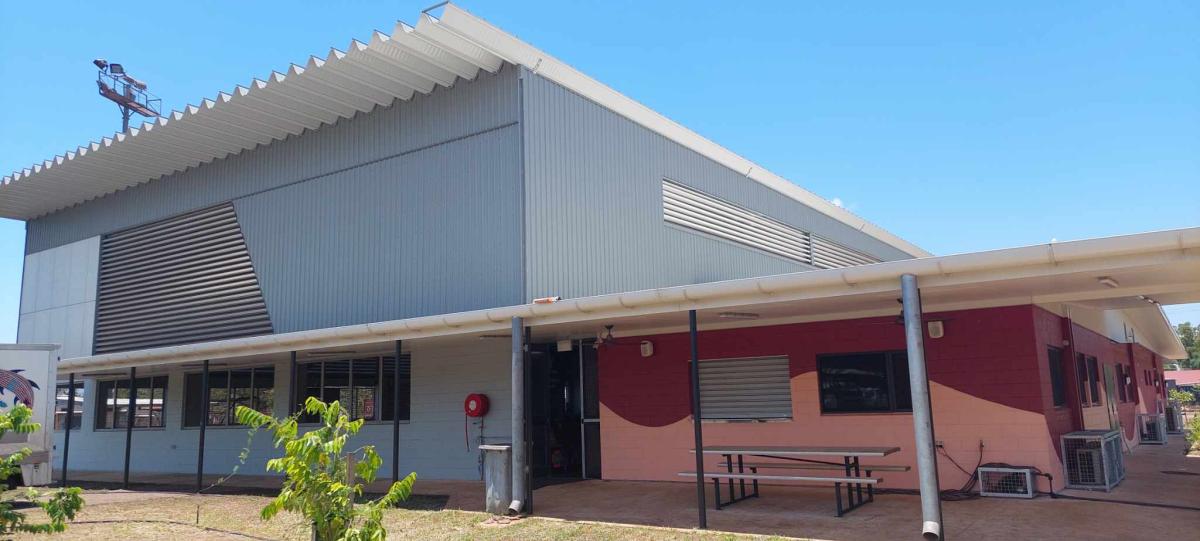Strategic Innovation in Remote Construction Featuring ARAMAX® in Action
PROJECT BACKGROUND:
On the remote shores of Groote Eylandt in the Gulf of Carpentaria, a triumph of ingenuity and resilience takes form as the Indigenous Community Sports Hub. With logistical complexities amplified by the island's seclusion, Fielders championed the ARAMAX® roofing solution to deliver a project that became a central, vibrant hub for the community.
Groote Eylandt's isolation presents unique challenges – logistical, environmental, and financial. The delicate balance of designing for a location prone to cyclonic weather while preserving its rich biodiversity, where 70 endangered species thrive undisturbed, required a nuanced approach. The pre-existing over-budget concept required a creative overhaul to meet financial and logistical constraints.
Damien Ingram of Clarke and Prince Architects sought a roofing system that would cater to both the community's needs and the project's financial parameters. "In remote areas, financial constraints dictate versatility," Ingram observed. "We needed a solution that could adapt to these demands." Having worked with ARAMAX® in previous projects, he knew Fielders could provide a solution that enabled cost savings and logistical efficiency.
FIELDERS SOLUTION:
ARAMAX® emerged as the system of choice for Groote Eylandt Indigenous Community Sports Hub’s 900sqm roof. Its bold profile and expansive span capabilities reduced the need for additional structural steel and purlins, providing significant cost savings. It’s ability to simplify the design and construction process have further flow-on benefits in time and labour efficiencies.
Brett Aldridge, Fielders Structural Engineer, provided indispensable technical guidance to the design engineer and electrical consultants. “We seek his advice as if he's one of our consultants,” Damien Ingram said. “He worked out the parameters of the product all the way through and gave us the advice we needed to integrate ARAMAX® into our design.”
Matt Hardy, representing Fielders in Far North Queensland and the Northern Territory, also became the pivotal figure in the project's turnaround. His liaison between architects and Fielders' Design Solutions Group and mobile mill teams ensured that despite the project's complexity, solutions were always within reach. “Fielders made the design easy. Having Matt’s early involvement took out all the guess work, and we were always only a phone call away, so it was as if I was the only client at the best of times,” Ingram adds.
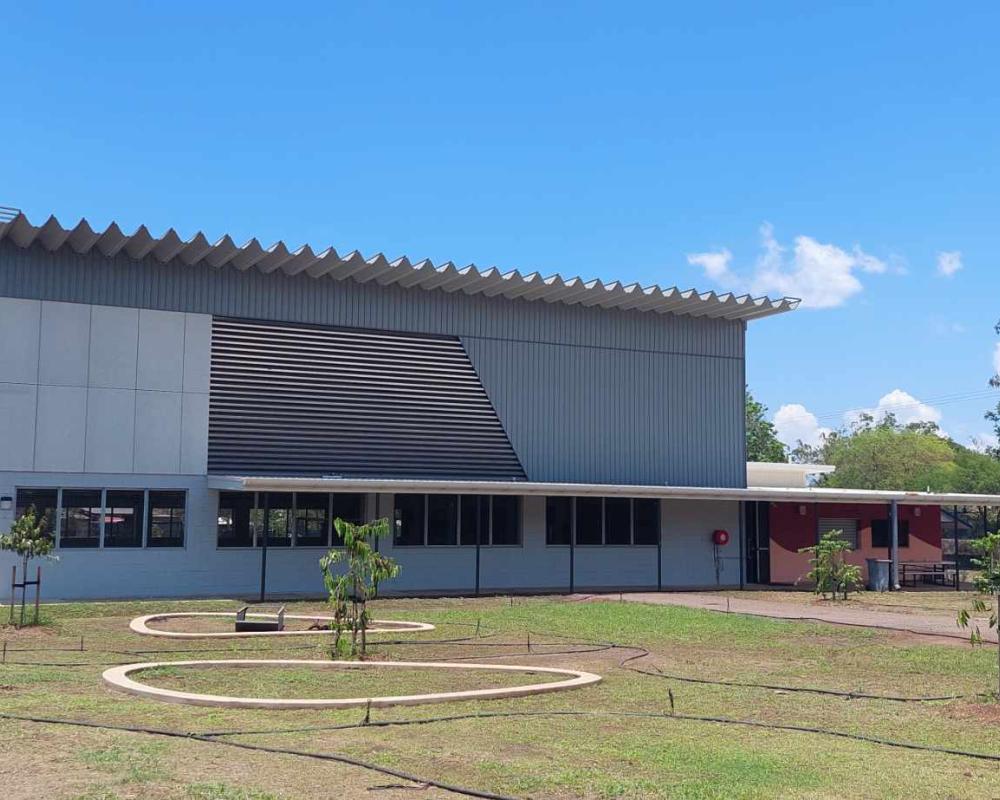
PROJECT EXECUTION:
Logistics were a paramount concern, with all supplies needing to enter the island via barge and subject to rigorous cleaning to protect the pristine environment before arriving on-site. Fielders’ Jason Kassulke expertly managed the mobile mill’s journey from Adelaide over land and sea to arrive at Groote Eylandt on time and ready for installation.
With delays in other areas affecting progress on-site, Thane Burdon and Tony Dammann from the mobile mill team adapted to roll the 38 metre ARAMAX® sheets to the ground, rather than lifting straight onto the roof. As installation would now occur after the mill had left the island, there was no room for error. Each ARAMAX® sheet was meticulously calculated, checked for imperfections, and then stored on-site until the roof could be put in place.
OUTCOMES:
The successful completion of the Groote Eylandt Indigenous Community Sports Hub, on time and within budget, proved the effectiveness of the ARAMAX® roofing system in a challenging environment. The project not only met but exceeded the community's expectations, providing a durable and aesthetically pleasing centre for sports and events.
"The enthusiasm of the community leading up to its construction commencement was palpable," architect Damien Ingram shares. "Now that it’s complete, you hear the bouncing of basketballs. That's when you know you’ve done your job properly," he adds with pride.
From Fielders’ perspective, the project allowed team members from across the organisation and the country to work hand-in-hand from inception to completion to overcome some of the most challenging conditions. "The team's dedication to the project was evident—they're very good at making my promises happen," Matt Hardy said, underscoring the collaborative spirit vital to the project's success.
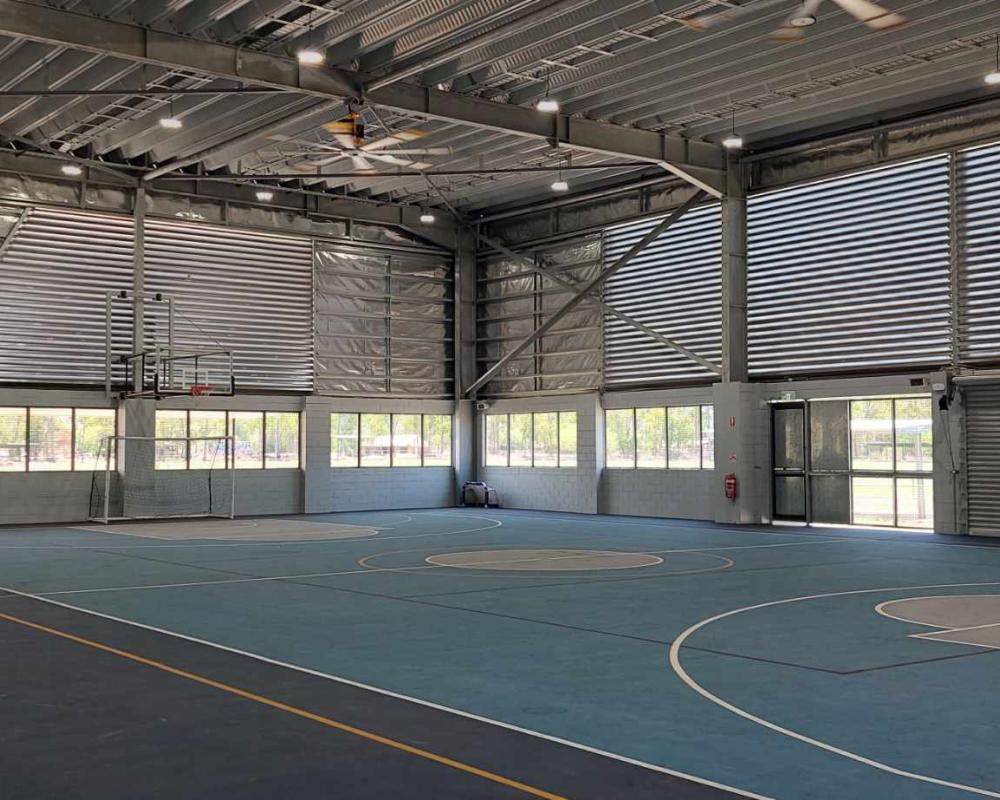
LEARNINGS:
The Groote Eylandt project refined Fielders' approach to remote construction, proving the value of early involvement and transparent communication. "It’s about making complex things simple," Ingram reflects, a principle that Fielders has taken to heart.
Plans for a similar project on Bickerton Island, modelled off the successful Groote Eylandt Indigenous Community Sports Hub, are underway with construction due to start just one year on. Fielders and Clarke and Prince Architects will collaborate once again, capitalising on the learnings and efficiencies of using ARAMAX® on Groote Eylandt to ensure another successful outcome.
CONCLUSION:
The Groote Eylandt Indigenous Community Sports Hub showcases Fielders' ability to address the nuanced requirements of remote and community-centric projects. Our ARAMAX® roofing provided an innovative, cost-effective, and elegant design solution with a great result for the local community. Fielders offers not just a product but a partnership, providing full-scale support from planning to execution, ensuring that every project is a success
About ARAMAX®:
Fielders’ ARAMAX® roofing system is specifically designed for large span requirements, making it ideal for facilities like community sports centres. Its unique engineering allows for wider purlin spacing, reducing the amount of structural support needed, which can lead to significant cost savings in material and labour. The durability of ARAMAX® ensures it can withstand severe weather conditions, making it a reliable choice for remote locations.
